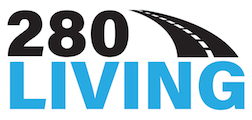1 of 2

Erica Techo
Students use an “invisible ink” pen to find clues around Chelsea High School.
2 of 2

Photo by Erica Techo.
Robert Kirk, an environmental science teacher, has brought the concepts of popular escape rooms into his lesson plans.
Lock combinations written in invisible ink. Messages in foreign languages. Clues hidden in lock boxes. These aren’t a part of a spy movie; they are all part of Robert Kirk’s classroom.
Kirk, an environmental science teacher at Chelsea High School, has brought the concepts of popular escape rooms into his lesson plans. Rather than pour through textbooks and take quizzes, students study clues and compile research that takes them through the halls of their school.
“I have been gradually getting rid of everything that resembles school — PowerPoint, lecture, things like that,” Kirk said, who is in his 12th year of teaching. “I want more of a real-world interaction.”
Inspired by Breakout Birmingham, a downtown attraction that puts teams into rooms where they must use clues to escape, Kirk started planning and researching creating lesson plans for teachers and “making millions,” he said with a laugh.
“Lo and behold, I start doing research over the summer and there’s Breakout EDU, which is a nonprofit, open-source site,” Kirk said.
Kirk presented the idea to Chelsea High School Principal Wayne Trucks, who fully supported the idea.
“Mr. Kirk is always eager for a new challenge and eager to find new ways to meet the needs of students, so I was not surprised, and once he explained it to me and the process and what,” Trucks said.
Breakout EDU sells pre-built breakout kits that include tools ranging from USB drives and four types of padlocks to UV lights and pens that allow you to read and write in invisible ink. The website also includes pre-built lesson plans that are free to use and involve plans for hiding clues and lock combinations while incorporating educational topics.
During one of their first breakout lessons, students had to use clues to learn their way around the lab. Many lessons start with a video introduction, oftentimes with a hint embedded, and students search for clue after clue to gather information. After students receive a clue, Kirk said he always offers one piece of advice: “Always look around the room, but look with a purpose. Don’t just go tearing everything up,” he said.
When a clue is something students do not know — a statistic they have not learned or a word they are unfamiliar with — Kirk does not shy away from encouraging them to use the modern day power tool — the internet.
“My mantra is ‘You have the world in your hands’ because they always have their phone in their hands,” Kirk said.
Some teachers shy away from including things such as Google in the classroom, Kirk said, out of fear students will just become zombies obsessively checking their phones. He recognizes them as a resource, he said, rather than a hindrance.
“Education is one of the only professions in existence today that can operate exactly the way it did 50 years ago, and people get away with it,” Kirk said, reiterating that using phones or an internet search is not a bad thing. The way lessons are taught through these Breakout EDU plans are also a way to step away from the old-fashioned ways of teaching, Kirk said, and thereby reach out to more students.
While it might not seem like running around a school searching for secret messages would lend itself to a productive classroom, Kirk said students have realized all the information they have internalized throughout the class. The first breakout was on lab safety, taking students to places such as the eye-wash station. There, they would scan a QR code and read about when and how to use the station. Next, they’d get a code that led to information on how to handle a fire.
“They’re so into getting the locks, and they get so competitive with each other that they don’t realize they’re getting content,” Kirk said. “They don’t realize they’re learning things.”
For visual or hands-on learners, this type of lesson is a better way to pick up on information. Caleb Gore, one of Kirk’s students, said while there are people who do better with textbooks and tests, he benefits from the more visual aspect of this class’s lessons.
“It’s a fun way of doing work without doing work,” said student Arielle Rooks. Rooks also noted that while it is nice to not worry about tests or quizzes or lectures, it is daunting to know her grade rests on opening one of the breakout boxes.
In November, the class was working on an environmental impact lesson where posters around the school led them to facts on man-made disasters such as Chernobyl, food web simulators, carbon footprint calculators, lessons on monarch butterfly migration and other environmental topics.
The next step, Kirk said, is applying those lessons around the school. He plans to instill a recycling program with a community recycling dumpster and promote school wildlife by planting a garden that attracts butterflies and bees. With the next breakout session — alternative energy — he envisions installing a solar-powered cellphone charging station.
“Whatever way we can apply what goes on in the classroom to the entire school, the greater impact it’s going to have because it’s that real world application that really sells it for the students,” Trucks said.
Introducing new teaching methods in the classroom is a good way to introduce lessons to students who do not enjoy learning through memorization or textbooks, Kirk said, but it is also a way to teach them a different way of learning.
“Hopefully they’ll walk away with a little knowledge of environmental science, but more so a new way of thinking,” he said.
